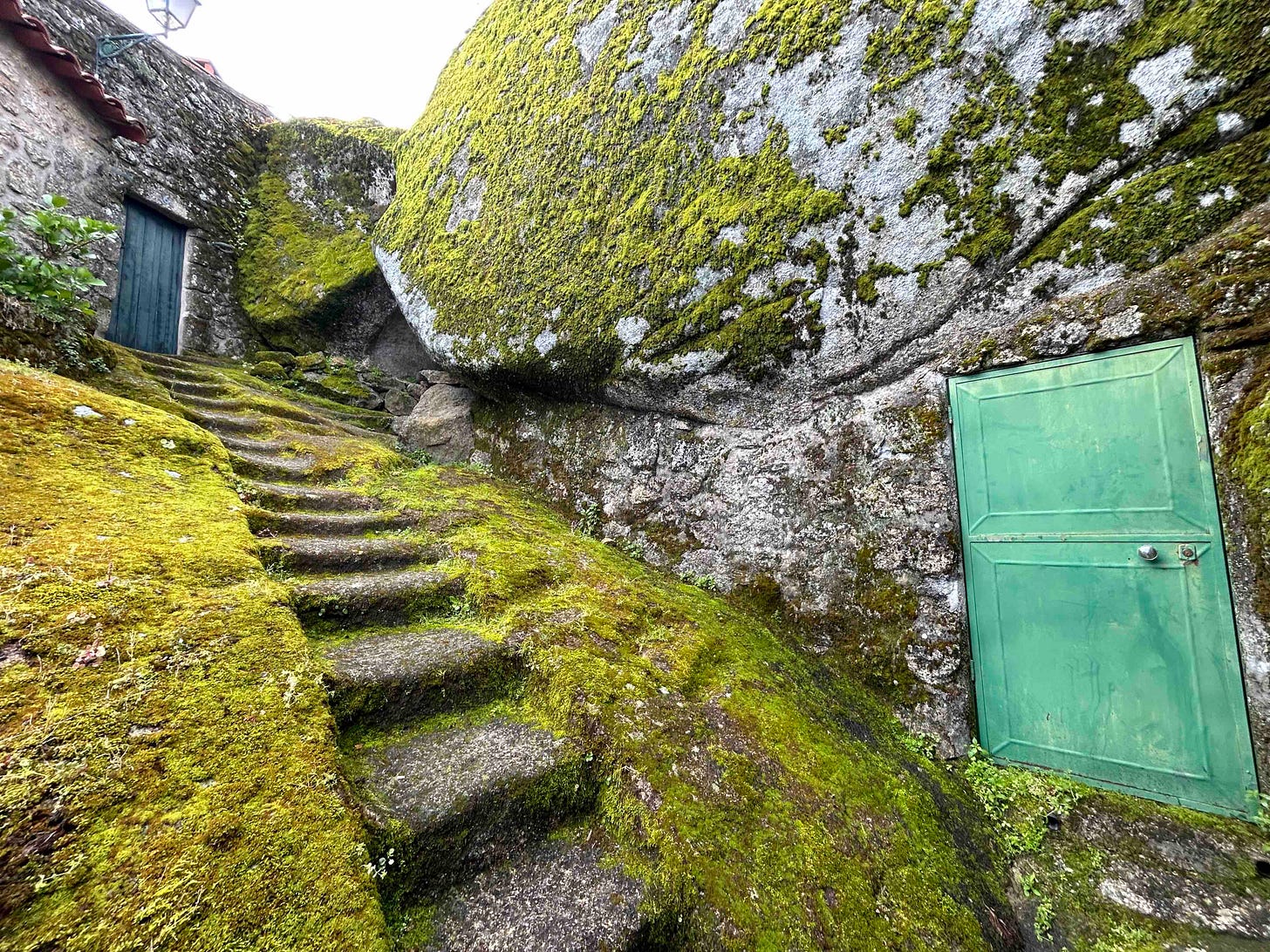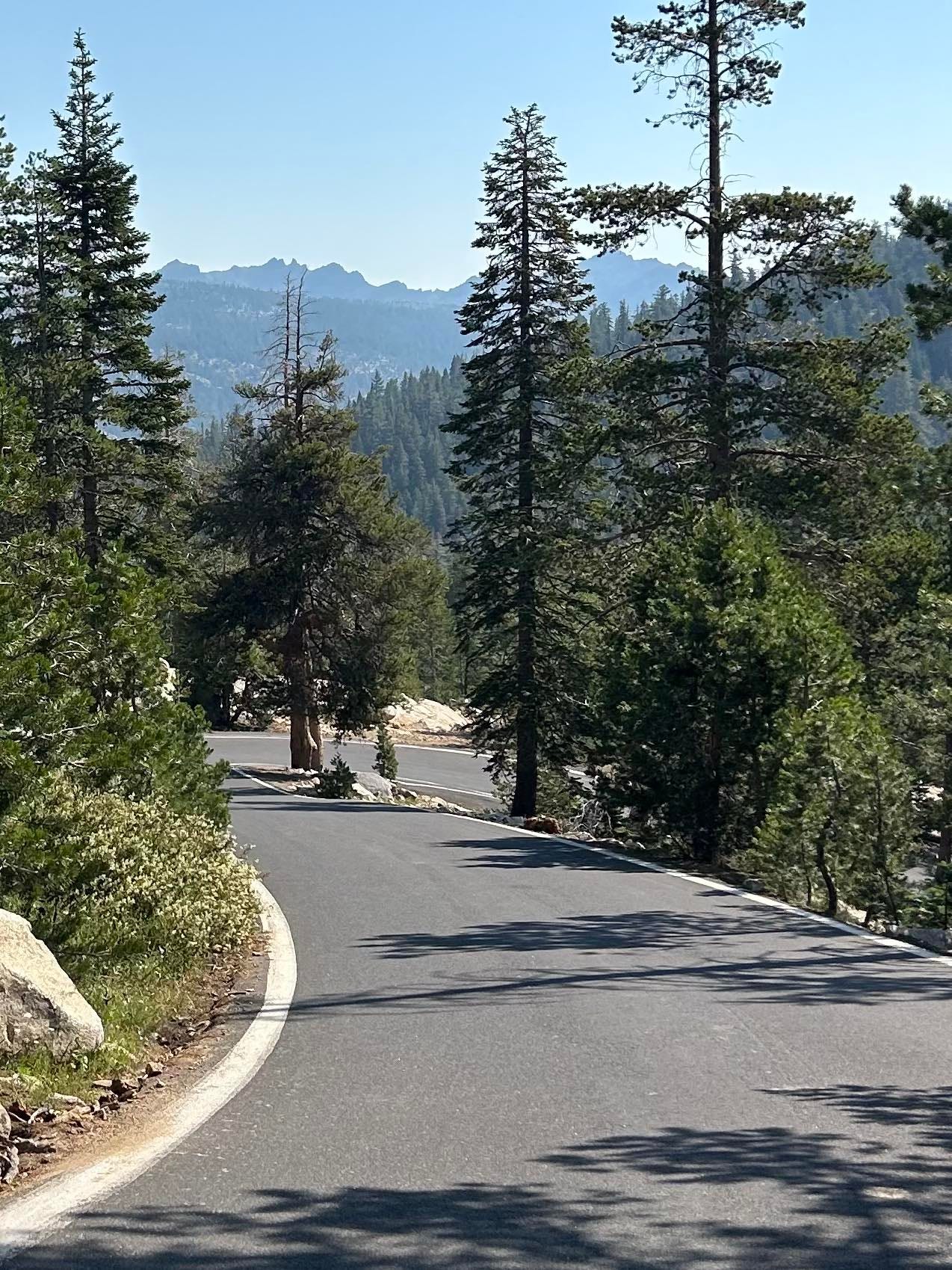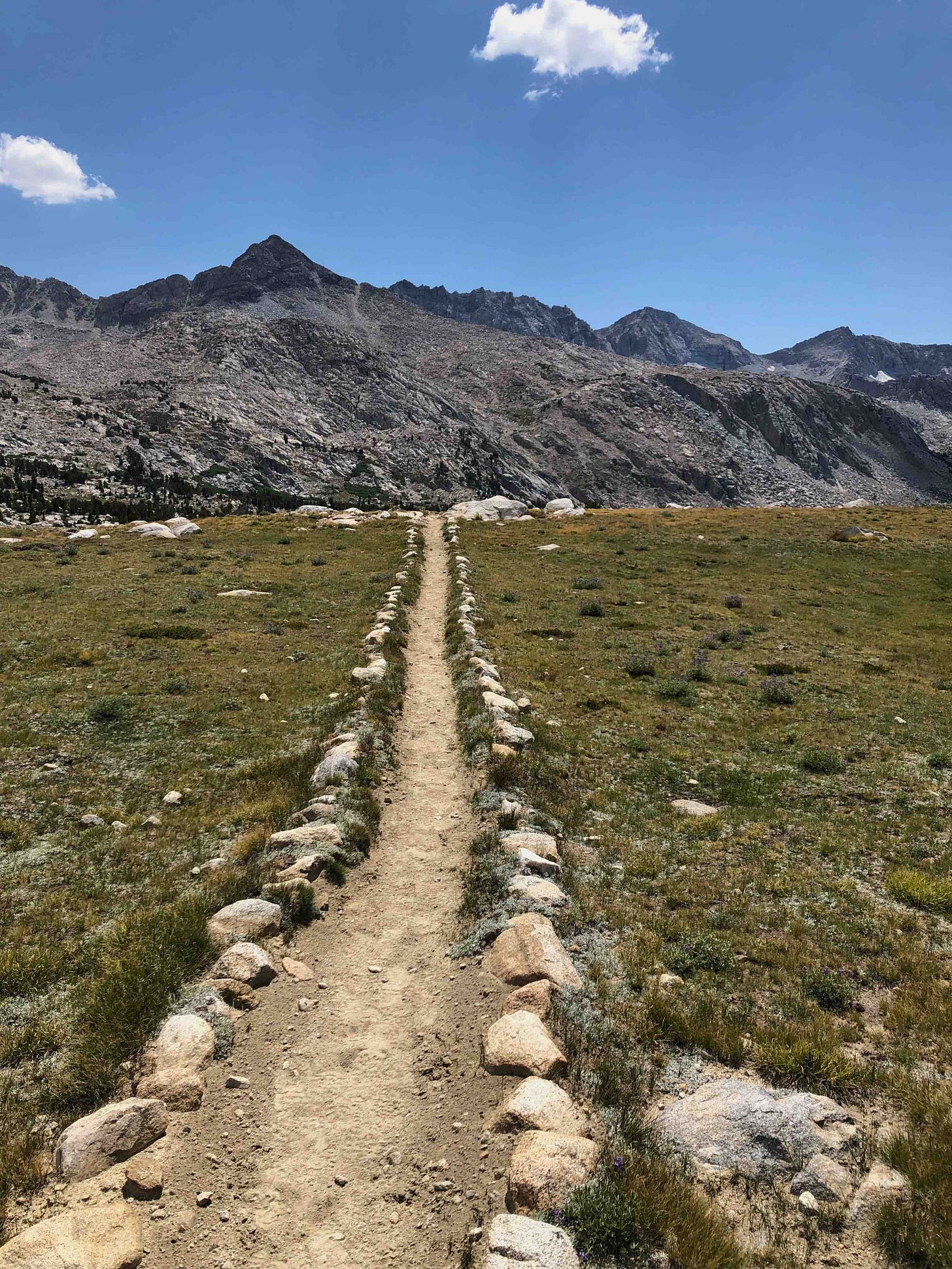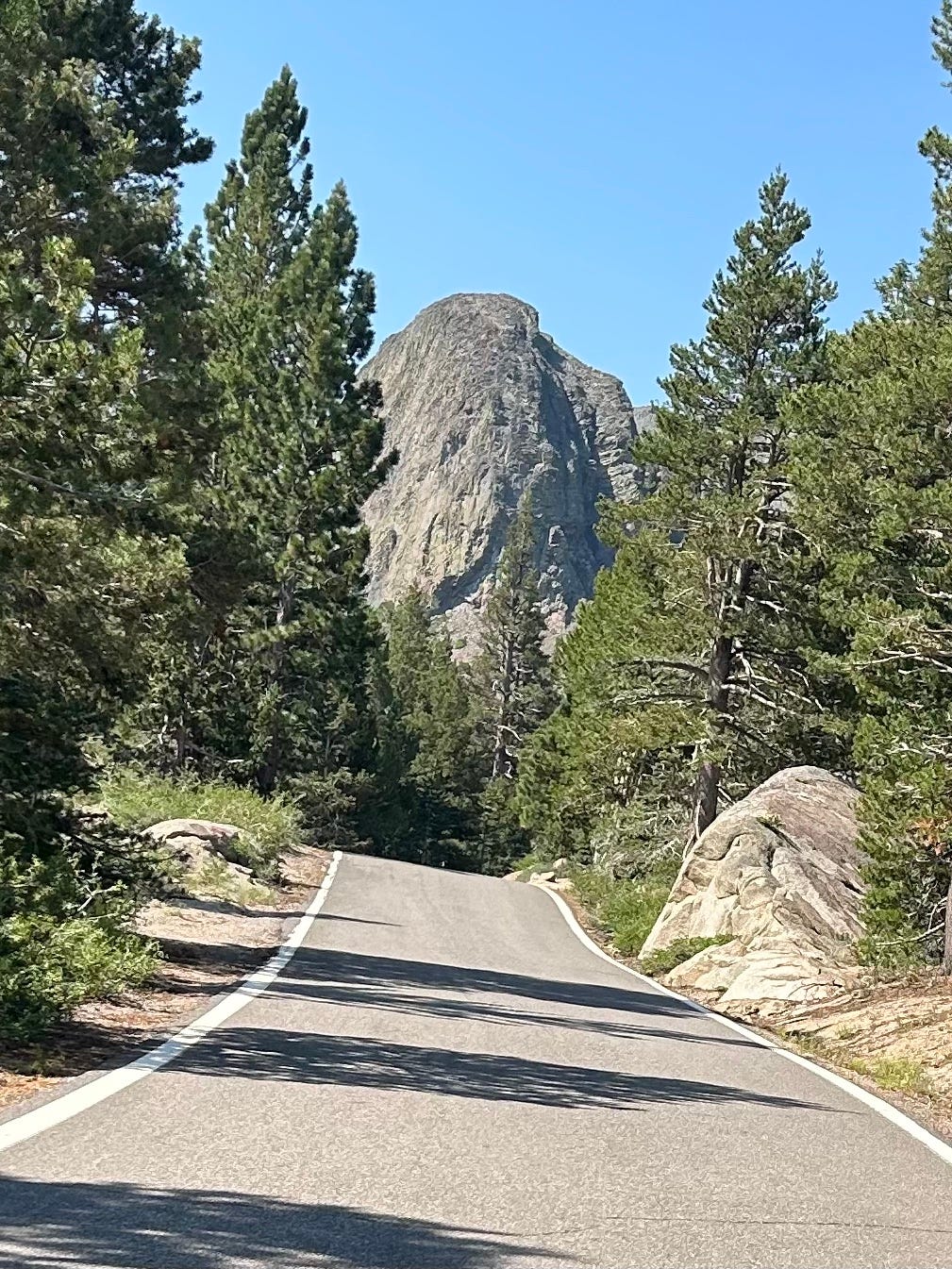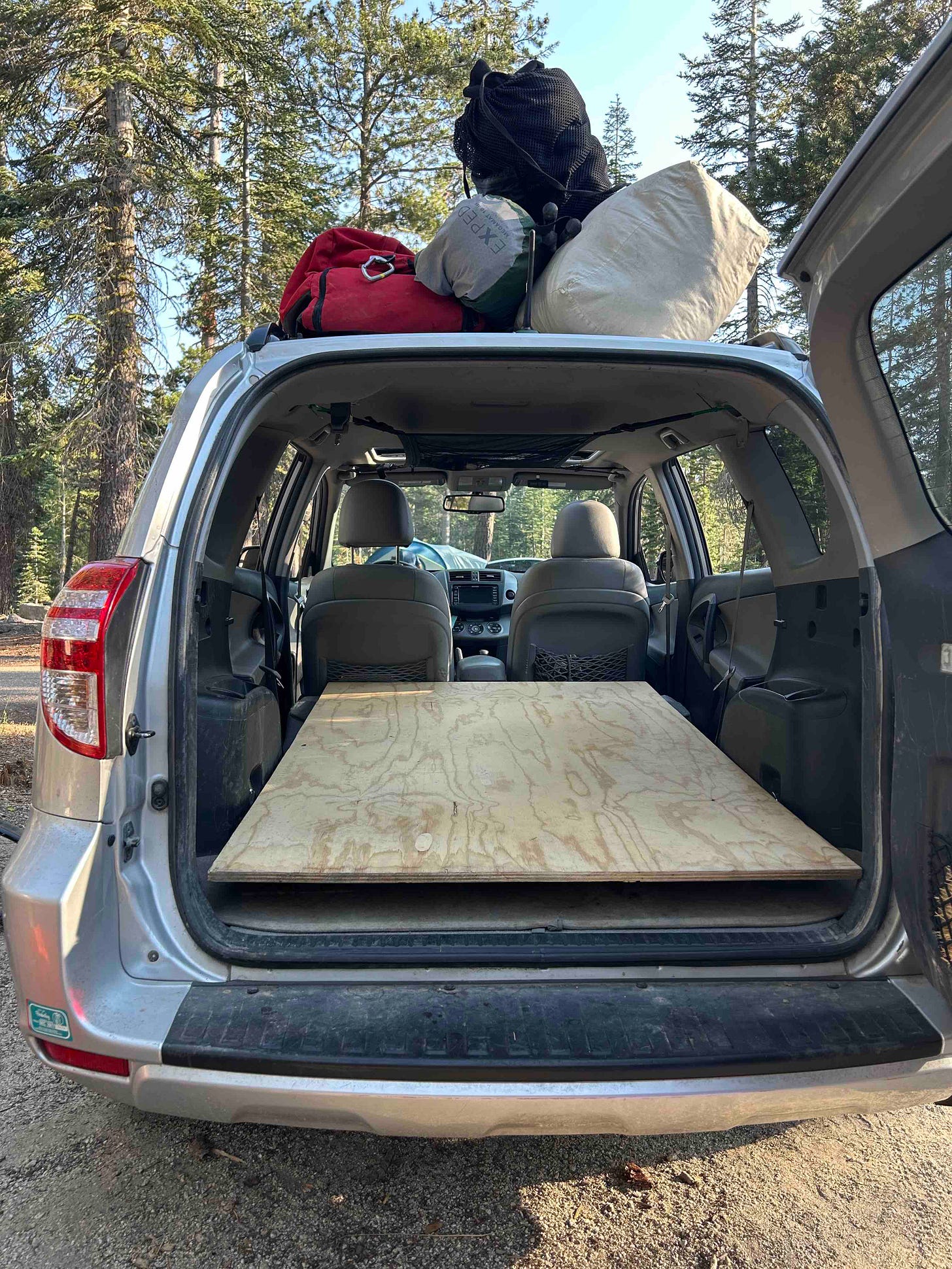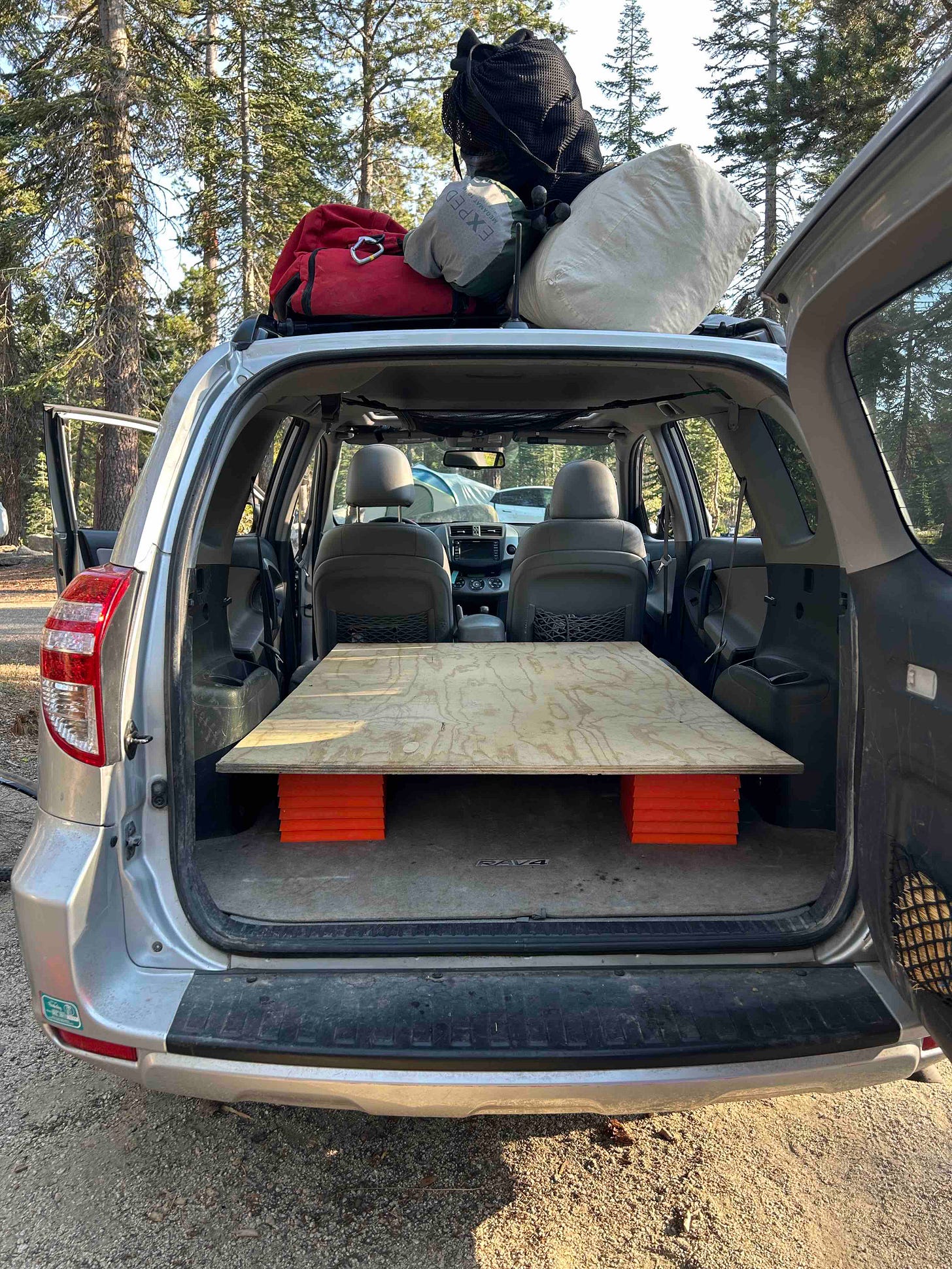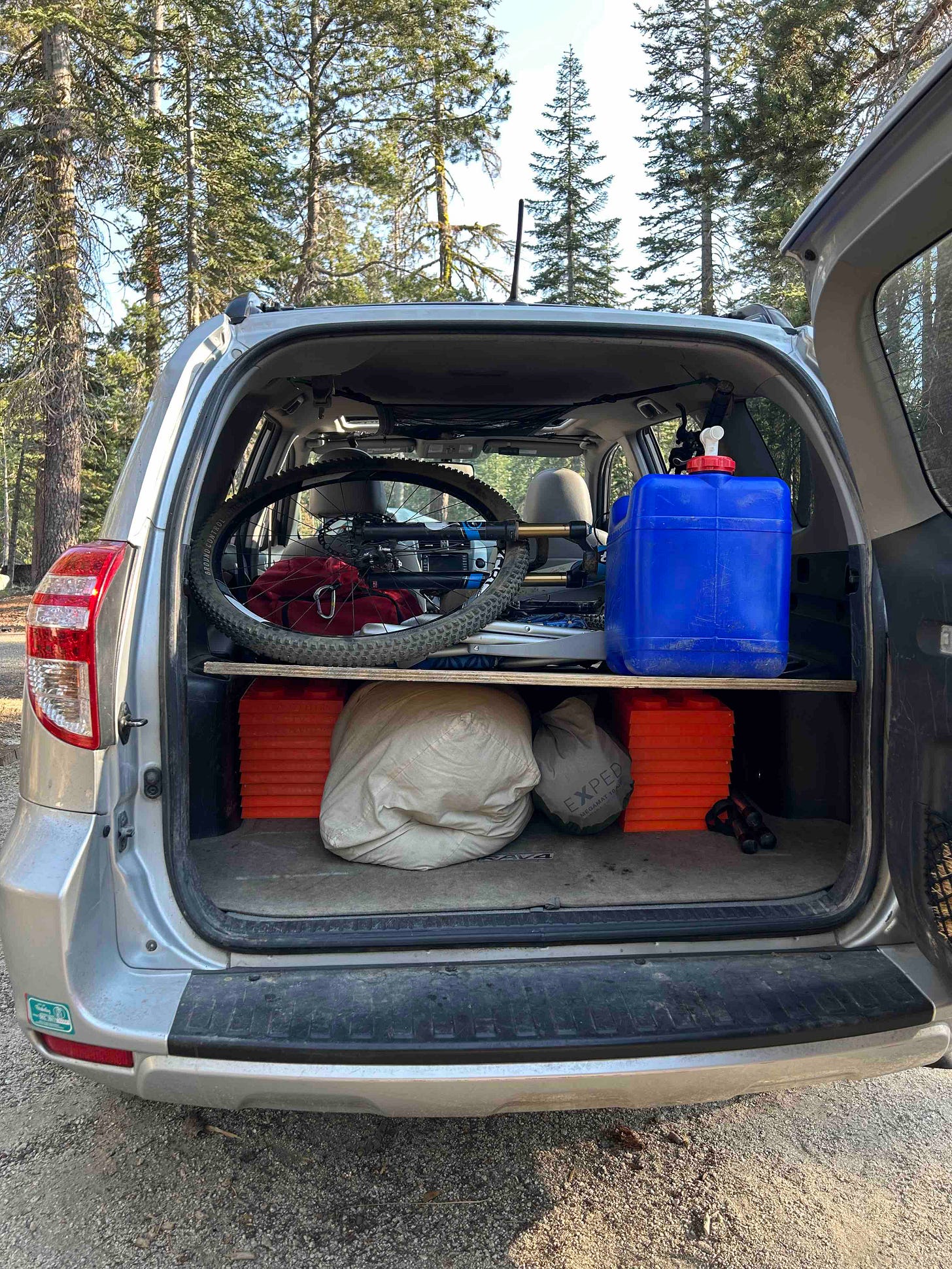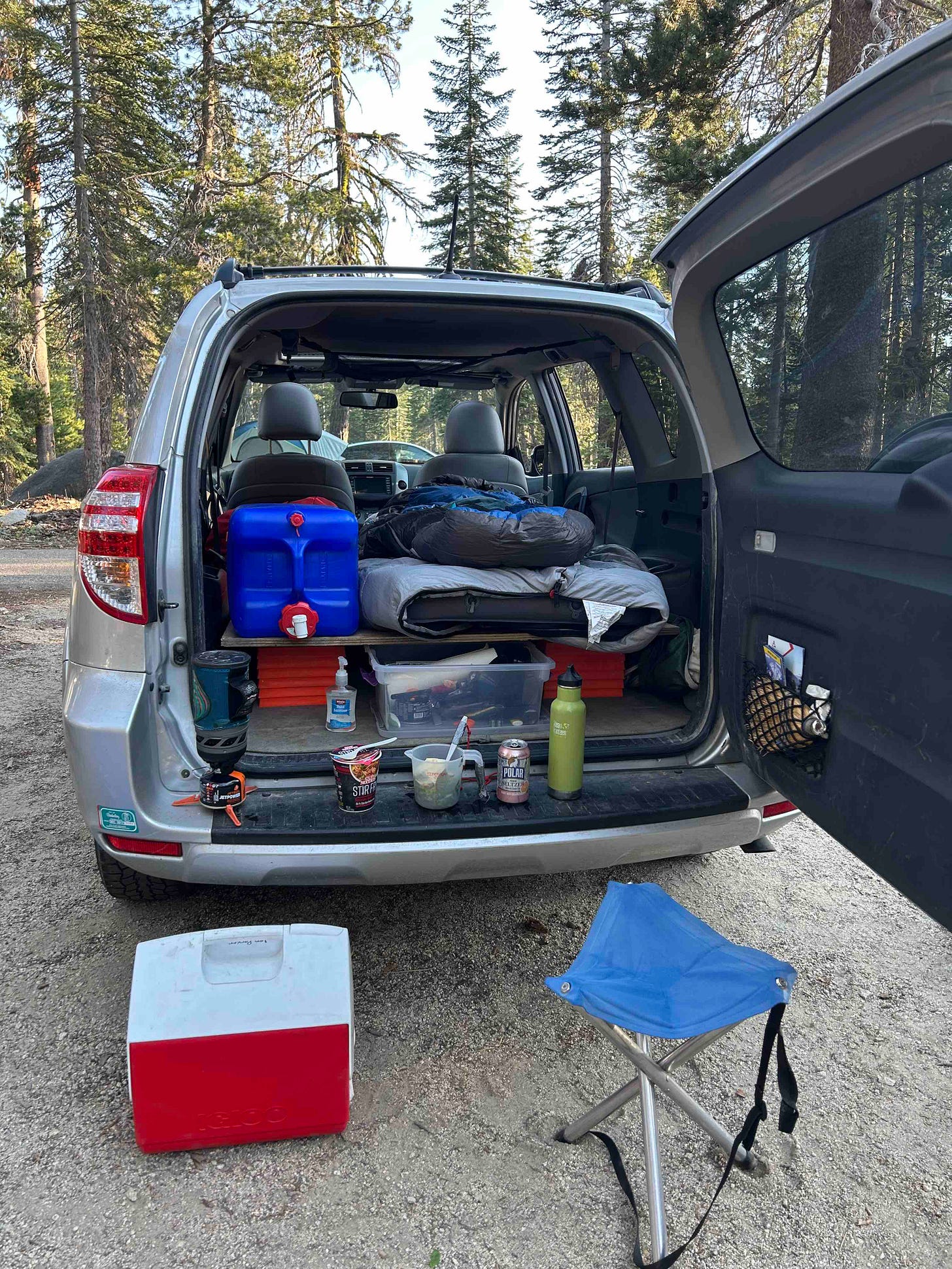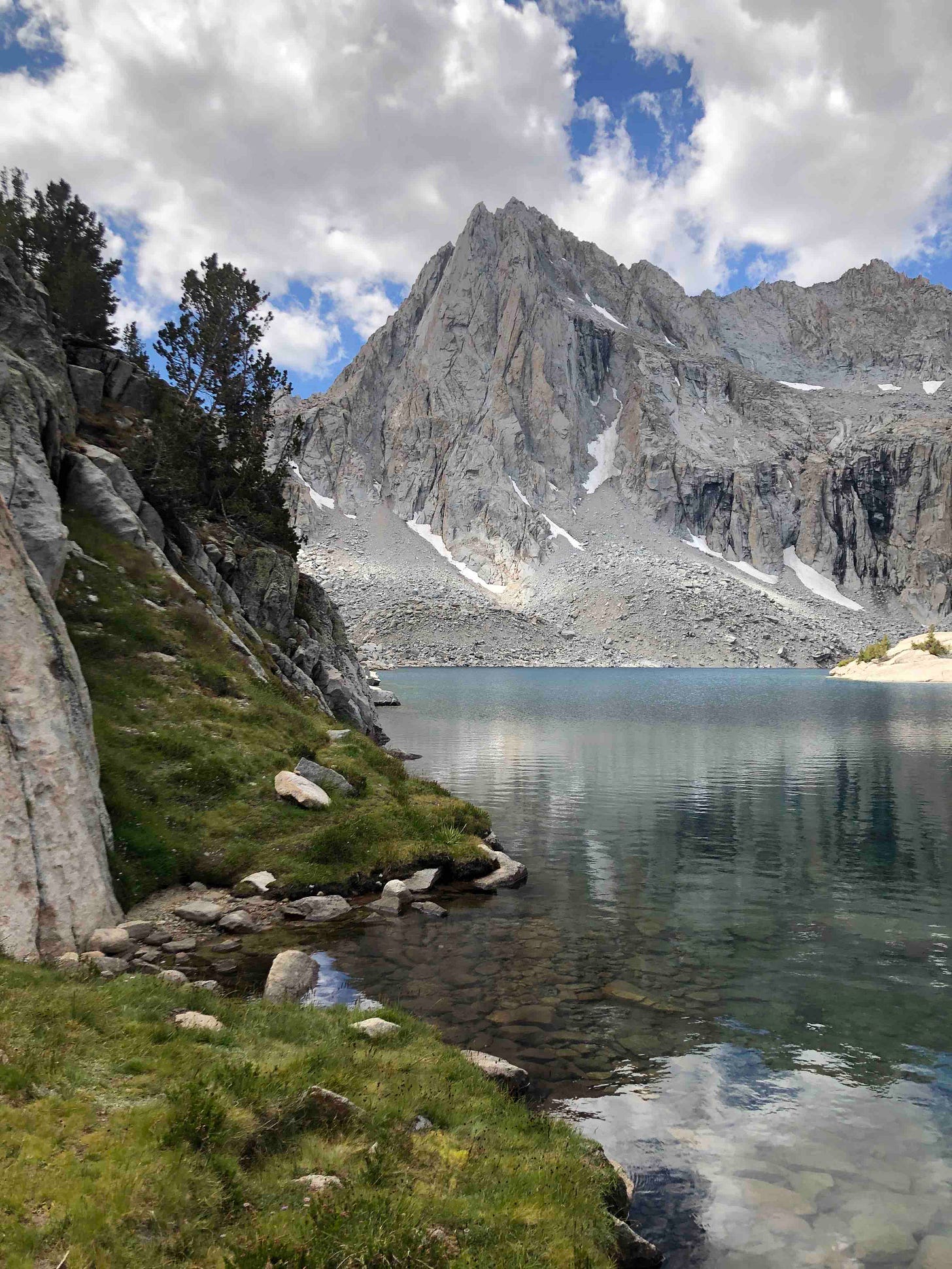Confidentiality Note & Disclaimer: This former top secret file of the Travel Superlight Agency is now unclassified. However, the Agency takes no responsibility for any harm that results from the release of this information, and denies that the work of Agent J, or that of any other field agent it employs in its mission to perfect the art of ultralight minimalist traveling, will actually help anyone at all.
Hi again, K. Got some time to kill now that I’ve finally made it to Central California Command. I think I owe you something. Yeah…um…sorry it’s a bit late. I thought it’d be a good use of my spare time chilling here at the lake to pull this together for you, especially since I’m back in WIFI range.
But first, I need to rave a bit. Gotta hand it to the CCC for so ingeniously hiding its operations center so that it’s able to remain so secretive in this modern day and age of social media. The lonely route from the north follows a small narrow road deep within the Sierra Nevada mountain range that winds its way through giant boulder fields and up and over unrelentingly steep alpine passes climbing road grades that are rumored to be the steepest in California. Of course, this was all part of the plan - place the CCC at a remote high altitude location where the sun is intense, the air is thin, and there’s nothing around for miles, so that it remains well hidden for generations to come.
On the route here, just beyond a nondescript general store in a tiny mountain village that barely made the map, lies the first series of obstacles - a succession of closed pipe gates bearing prominent “ROAD CLOSED” signs which bar further progress by the general public. Past these controlled access points, guarded by the California Highway Patrol, the way forward gets increasingly more treacherous.
Further up the road, a series of remote checkpoints monitor the progress of those making their way through the crucible. It’s at these temporary field stations where trained personnel check for valid travel credentials and stamp paperwork that marks an agent’s progress along the route. Staff are able to report positions of agents enroute via radio to Central Command. Any sign of distress or trouble may be immediately reported to EMS or law enforcement.
Even more deterrents are in place to discourage those up to no good. A seemingly endless series of signs, electronic boards, banners, and other universal traffic controls alert would-be infiltrators of upcoming difficulties and dangers. Perhaps the most effective deterrent is the various artwork scattered along the way prominently bearing images of skulls, skeletons, and huge hard-to-miss banners proclaiming that certain “Death” is just a few corners away on the long “Ride” up the road. This goes on for miles - 103 of them to be exact.
Anyone contemplating dodging these controls by hiking around them to get to the CCC is hardly better off. The Pacific Command Trail (PCT), a well worn backcountry trail that links up all of the Agency’s west coast command centers, eventually makes is way to the CCC but this path isn’t for the feint of heart either. A big round of applause goes out to all those CCC trail builders back in the day for ensuring that the PCT is dauntingly gnarly enough to discourage any but the hardiest travelers from making it through.
But getting back to business, K, I can now fill you in on exactly why I was hauling ass out of HQ on Thursday to go buy that new sheet of plywood. To answer your question most directly, yes, there’s already plenty of plywood in the Vault, but we needed an upgrade. Sorry. I know it’s a pain in the butt for you to process Purchase Orders after the fact, but I was running out of time.
My hope is that submitting this PO directly from the CCC helps grease the skids with Document Controls. If they give you any grief, just blame me. Make something up about how Agent J was strategically waiting until he got to the center’s ultra secure encrypted WIFI network to submit the paperwork. After all, without such careful measures, such seemingly innocent and mundane plywood purchases could raise much suspicion were these documents to fall into the wrong hands…
###
Tracking
MISSION: J35761-2025D
DCN: 7390143
TDY: BEAR VALLEY, CALIFORNIA
DATE: 2025-07-13
TIME: 4:47 PM (PDT)
TO: AGENT K
FROM: AGENT J
CC: AGENT W
SUBJECT: PURCHASE ORDER 119 - PLYWOODPurchase
DESCRIPTION: PLYWOOD
STYLE: GRADE A, 3/4 INCH
SIZE: 4' BY 8', CUT TO FIT
MATERIAL: BIRCH
COLOR: NATURAL
PRICE: BEST AVAILABLE
QUANTITY: ONE
MANUFACTURER: ANY
VENDOR: BUY LOCAL
DATE NEEDED: ASAPReason(s) for Ordering
A single sheet of plywood simply and easily converts many Agency vehicles into minimalist ultralight car camping rigs for domestic field assignments. While there are perhaps tens of thousands of different ways to camp out in the woods, minimalist ultralight campers will appreciate the simplicity of using a simple sheet of plywood bought at their local hardware store over the complexities and higher expenses of other alternatives like campers, trailers, RVs, and the like.
A thick sheet of plywood provides a nice balance between overall weight and basic function. While thinner sheets may be lighter and slightly easier to install inside a vehicle, the additional layers of a beefier slab provide for a stiffer sleeping surface when spanned over gaps, bumps, and any other unruly features of vehicle interiors while simultaneously providing a sturdy shelf for storing heavy items when in transit (e.g., water jugs, coolers, duffle bags, etc).
One of the best attributes of a sheet of plywood is its simplicity in design, consuming as little space as possible while maximizing storage opportunities both above and below. Without drawers or cabinets to add extra bulk, weight, and volume, a field agent is often able to place the plywood in the vehicle with minimal assistance from others (soliciting the help of a second field agent is highly recommended to save one’s back).
A set of leveling blocks (not included with purchase, sold separately) provides for a level sleeping surface. While most people would place such blocks underneath the wheels of their vehicle to level things out, it’s actually more effective, faster and easier to simply park one’s vehicle in the flattest spot possible and then subsequently place the leveling blocks directly underneath the plywood. The number and position of blocks may be adjusted to flatten out the sleeping platform. When parked at an angle, an uneven number of blocks may be placed at any one of the four corners to offset most lateral and transverse slopes. An added bonus is that, by placing these blocks inside the vehicle instead of under its tires, additional space is made available below deck to store gear.
The modular design of the leveling blocks enables agents to fashion funky layouts to store bulky equipment while in transit. For example, for strategic missions that require a bit of pedaling, blocks maximize above- and below-plywood storage space to allow transporting things like unwieldy mountain bikes inside vehicles, in addition to any other necessary camping gear, without the need for an “always-in-the-way” exterior bike rack (a constant annoyance of ultralight minimalists).
After unloading heavy gear on arrival at a destination field camp, a field agent may may add or remove leveling blocks as necessary to raise or lower the platform for sleeping.
Upon full deployment at camp, this simple sheet of plywood, propped up by blocks, enables field agents to build tiny little kitchens on their rear bumpers where they can cook, eat, and chill at just about any remote field camp out there.
Index Scores
MASS: 2 - LET'S HIRE THE MOVERS
VOLUME: 2 - OH NO! NOT THE BIG BACKPACK!
UTILITY: 9 - THAT'S AWESOME MAN!
EFFICIENCY: 9 - HOW DO YOU LIKE THEM APPLES?
OVERALL: 8 - THAT'S WHAT I'M TALKIN ABOUT###
Gotta go, K. The lake is calling me. And I desperately need to clean up before I land on the doorstep of the CCC. I don’t think anyone would appreciate my specially formulated cologne of sunscreen, bug spray, sweat, bike lube, and trail dirt.
As always, please let me know if you have any questions.
In the meantime, stay cool, be safe, and see you later next week. Cheers,
J



